#Ericameria
Video
Rubber Rabbitbrush and Other Wildflowers at the Cedar Tree Tower (Mesa Verde National Park) by Mark Stevens
Via Flickr:
A setting looking to the west while taking in views across a field of rubber rabbitbrush wildflowers present around the Cedar Tree Tower in Mesa Verde National Park. My thought on composing this image was to use the LiveView LCD screen on my Nikon D850 SLR camera. I wanted to have the wildflowers all around me, but to include a depth in having them extend off the image edges. I felt that using the LiveView screen would allow me to hold the camera for that view but not have me disturb the wildflowers by getting in them using the optical viewfinder.
#Ancestral Puebloan#Ancestral Puebloan Archaeological Sites#Archaeological Preserve#Archaeological Sites#Azimuth 289#Blue Skies#Blues Skies with Clouds#Cedar Tree Tower#Colorado Plateau#Day 6#DxO PhotoLab 7 Edited#Ericameria nauseosa#Intermountain West#Landscape#Landscape - Scenery#Looking West#Mesa Verde National Park#Nature#New Mexico and Mesa Verde National Park#Nikon D850#No People#Outside#Partly Sunny#Portfolio#Project365#Rocky Mountains#Rubber Rabbitbrush#Scenics - Nature#SnapBridge#Southeast Colorado Plateau
2 notes
·
View notes
Text
Word List: Gold

beautiful words with "gold" for your next poem/story
Goldbrick - a worthless brick that appears to be of gold; something that appears to be valuable but is actually worthless
Goldcrest - golden-crested kinglet, specifically: a tiny European kinglet (Regulus regulus) having a bright yellow crown patch bordered with black
Goldcup - buttercup; a marsh marigold (Caltha palustris)
Goldenbush - any of various rabbitbrushes (especially genus Ericameria)
Goldeneye - either of two diving ducks (genus Bucephala) with small yellow eyes; a lacewing (family Chrysopidae) with yellow eyes
Goldentwig - a red osier dogwood (Cornus stolonifera flaviramea) with yellow branchlets
Goldenwing - a flicker (Colaptes auratus) or a kind of woodpecker
Goldflower - any of several yellow-flowered or predominantly yellow-flowered composite plants
Goldmist - a grayish yellow that is greener and very slightly lighter than chamois and greener, lighter, and stronger than old ivory or crash
Goldspink - the European goldfinch
Goldstone - aventurine glass spangled close and fine with particles of gold-colored material
Goldthread - a plant of the genus Coptis especially: a low smooth perennial North American herb (C. groenlandica) with alternately divided leaves and a bright yellow rootstock
Goldweed - any of several plants of the genus Ranunculus especially: corn crowfoot i.e., a common European crowfoot (Ranunculus arvensis) with pale yellow flowers and spiny achenes
Marigold - any of a genus (Tagetes) of composite herbs with showy usually yellow, orange, or maroon flower heads
Palegold - a metallic powder made of a brass alloy and having the appearance of gold when used as a paint pigment
If any of these words inspire your writing, do tag me or send me a link. I'd love to read your work!
More: Word Lists
#word list#gold#writing reference#writing inspiration#spilled ink#dark academia#writeblr#words#langblr#linguistics#writing ideas#creative writing#light academia#studyblr#literature#writing prompt#writers on tumblr#poets on tumblr#poetry#salvador dali#surrealism#writing resources
59 notes
·
View notes
Text
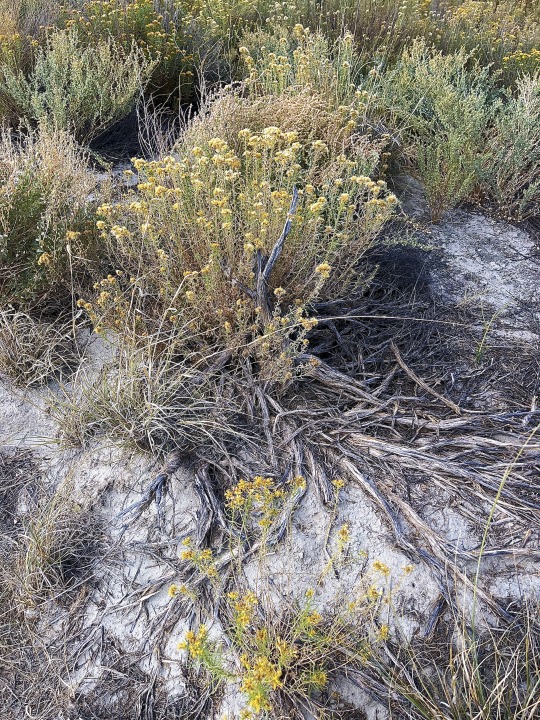
Rabbitbrush (Ericameria nauseosa), near Willcox, Cochise County, Arizona.
64 notes
·
View notes
Text
Rubber Rabbit
Rubber Rabbitbrush
The Rubber Rabbitbrush, scientifically known as Ericameria nauseosa, is a native plant from western Canada to California, Texas, and northern Mexico. It is a hardy shrub that thrives in dry climates, making it a popular choice for xeriscape gardens due to its deep root system. Cultivation of this plant can be achieved through seedlings or seeds, with planting recommended in…

View On WordPress
1 note
·
View note
Text
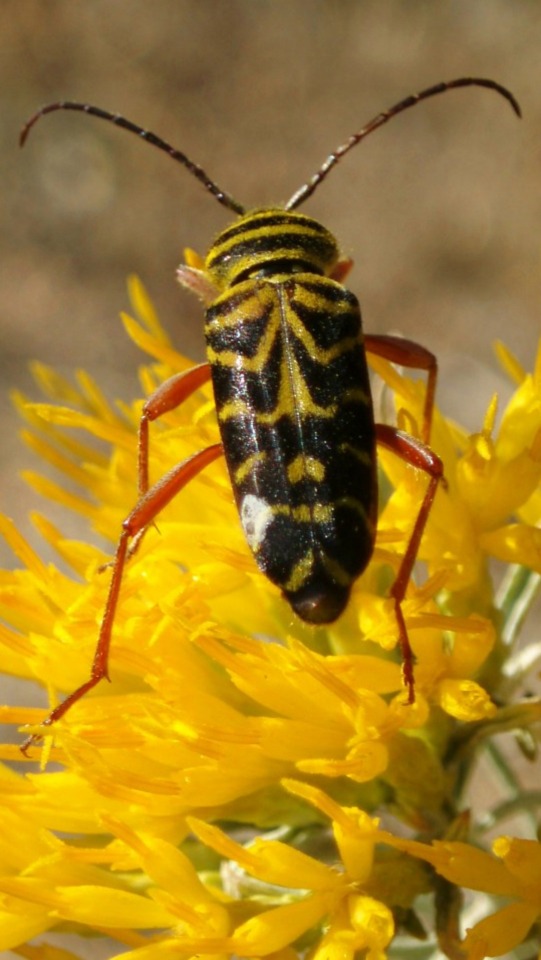


Top (my own photos): Long-horned beetle [Cerambycidae family] (Megacyllene robiniae), a.k.a. locust borer beetle on rabbitbrush (chamisa) (Ericameria nauseosa). Mimicry (of wasp) or camouflage on rabbit brush - or both?
Bottom: Wasp on Rabbit brush
1 note
·
View note
Link
#bees#butterflies#californianativeplant#chamisa#desertplant#droughttolerantplant#nativeplant#sandiegogarden#yellowflowers#zone9garden
0 notes
Text

#alpine#america#autumn#bloom#blooming#blue#bright#ca#california#chamisa#chrysothamnus#colorful#copyspace#day#eastern#ericameria#fall#flora#floral#flowers#golden#gray#lakes#landscape#mammoth#photography#relax#nature#home decor#music
3 notes
·
View notes
Text




4 notes
·
View notes
Video
J20171005-0026—Ericameria fasciculata—RPBG—DxO by John Rusk
Via Flickr:
Ericameria fasciculata—Eastwood's goldenbush. The species is included in the CNPS Inventory of Rare and Endangered Plants on list 1B.1 (rare, threatened, or endangered in CA and elsewhere). Eastwood's goldenbush is presently found solely in Northern Monterey County. Although much habitat is protected in Fort Ord National Monument, S.F.B. Morse Botanical Preserve, and Monterey County parks, the species is sometimes inadvertently sprayed in weed abatement programs because it colonizes disturbed areas. An excellent description of the plant can be found in Elkhorn Slough Coastal Training Program fact sheet "Ericameria fasciculata" www.elkhornsloughctp.org/factsheet/factsheet.php?SPECIES_... . Photographed at Regional Parks Botanic Garden located in Tilden Regional Park near Berkeley, CA.
#DxO Kodak Elite 100 (cross-processed) preset#DxO Film Pack#ebparksok#taxonomy:kingdom=Plantae#Plantae#taxonomy:subkingdom=Tracheophyta#Tracheophyta#taxonomy:phylum=Magnoliophyta#Magnoliophyta#taxonomy:class=Magnoliopsida#Magnoliopsida#taxonomy:order=Asterales#Asterales#taxonomy:family=Asteraceae#Asteraceae#taxonomy:tribe=Astereae#Astereae#taxonomy:genus=Ericameria#Ericameria#taxonomy:species=fasciculata#taxonomy:binomial=Ericameria fasciculata#Ericameria fasciculata#Eastwood's goldenbush#taxonomy:common=Eastwood's goldenbush
2 notes
·
View notes
Photo

Western meadowlark (Sturnella neglecta) on rubber rabbitbrush (Ericameria nauseosa)
Rocky Mountain Arsenal National Wildlife Refuge, Colorado, USA
#original photography#wildlife photography#nature photography#Ornithology#rocky mountain arsenal#wildlife refuge#colorado#winter
8 notes
·
View notes
Photo


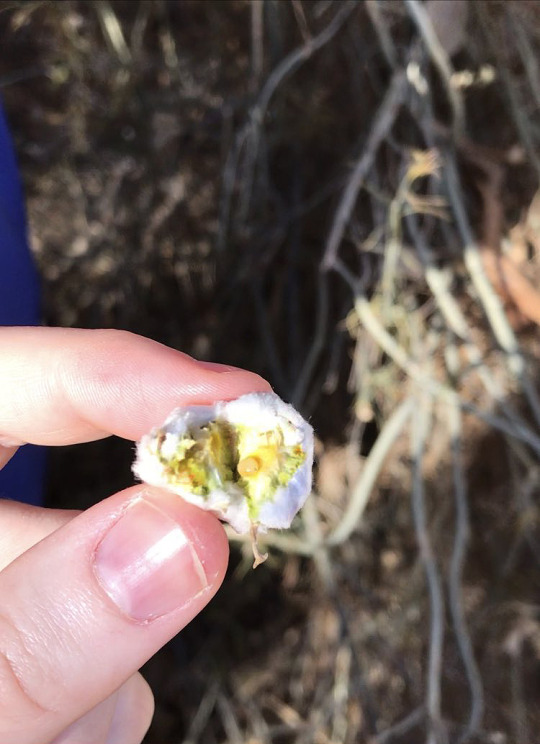

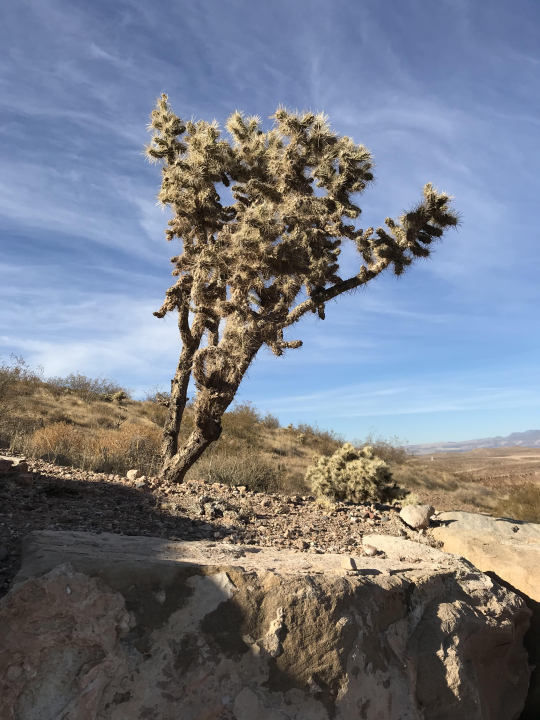

Desert Plants of Utah
The first three photos are of a shrub that I noticed had fluffy, cotton-like galls. When torn open, you could find a small, wiggling grub inside the gall. It is likely this plant is a type of goldenbrush/rabbitbrush (genus Ericameria). These plants are known to form galls due to fruit flies.
The yellow flower is likely a type of desert marigold (genus Baileya).
The cactus is called a cholla (’choy-ya’), genus ‘Cylindropuntia.’ They have papery sheaths on their spines, which I find interesting. They are a common sight in this desert.
Finally, the last bush is a creosote bush (Larrea tridentata), something that grows very plentiful around here, sometimes quite large. This plant has been around for thousands of years and Native Americans used to make use of it as a medicinal herb. It’s usually called ‘chaparral’ when being used as an herb. It was used for a wide range of ailments. Today it is possible to buy chaparral tea, but it is NOT WISE to drink it-- it is toxic. The U.S. Food and Drug Administration and Health Canada have both advised not taking this plant internally, as it can damage the liver and kidneys.
A very neat fact about the creosote bush is that in the California desert, a particular colony of this bush is thought to be one of the oldest living organisms on Earth. Measures have produced an age estimate of around 11,700 years.
2 notes
·
View notes
Video
From Near to Far, I Only See Wonders (Mesa Verde National Park) by Mark Stevens
Via Flickr:
While hiking the Knife Edge Trail with a view looking to the west across the Montezuma Valley to more distant ridges and peaks of the Ute Mountain Area. This is in Mesa Verde National Park. My thought on composing this image was to get behind some nearby rubber rabbitbrush and then capture a view beyond across the ridges of the national park (image left) to the more distant peaks off in the distance. I closed down on the aperture so that I could bring more of the entire image into focus. The rest was metering to not blow any of the highlights in the skies above, while still being able to pull the nearby shadowed areas later on in post-production.
#Ancestral Puebloan#Ancestral Puebloan Archaeological Sites#Archaeological Preserve#Archaeological Sites#Azimuth 278#Blue Skies#Blues Skies with Clouds#Clouds Wisps#Colorado Plateau#Day 5#DxO PhotoLab 7 Edited#Ericameria nauseosa#Intermountain West#Knife Edge Trail#Landscape#Landscape - Scenery#Looking West#Mesa Verde National Park#Montezuma Valley#Mountain Peak#Mountains#Mountains in Distance#Mountains off in Distance#Mountainside#Nature#New Mexico and Mesa Verde National Park#Nikon D850#No People#Outside#Partly Cloudy
1 note
·
View note
Text
Rubber Rabbitbrush

Scientific Name: Ericameria nauseosa; also often called Chrysothamnus nauseosus
Perennial; 2-6’; full sun; any well-drained soil; very drought tolerant
Description: Rubber rabbitbrush is a sizable shrub that grows up to 6’ high and 2-5’ wide. Its stems are light greenish-gray, woody at the base, and aromatic. Well, some would say aromatic and others would just say super smelly. And it is that feature to which the scientific name refers: nauseosa, meaning “very sickening,” is how many people would describe the pungent odor released when parts of this plant are bruised, cut, or even brushed up against. Leaves are alternate, narrow, linear, and simple. Tiny white hairs cover the leaves and young stems, giving the entire shrub a grayish cast. Flowers are branched with little yellow discs forming a clustered head. It blooms late-summer to fall. The colors are vibrant in September, set off by surrounding vegetation that has already turned tan or brown. The flowers and twigs of this shrub can be used to make a yellow dye, and the flexible green, aromatic branches can be used for basket weaving and other crafts. Native Americans used this plant medicinally. They also ground the wood and bark to make chewing gum. Two facts to explain its common name: 1) Rubber rabbitbrush contains small amounts of rubber, but not enough for commercial use. 2) Rabbits famously use this shrub for cover in the wild, and they’ll likely do the same in your suburban garden.
Height: 2-6’
Spread/Spacing: 2-5’ spread; space 5-6’ apart
Exposure: full sun
Soil Tolerances: Adaptable: does fine in loamy, sandy, gravelly, or clayey soil, but it must be well-drained and non-acidic. Prefers neutral to slightly alkaline soils.
Soil Moisture: dry to medium
Water: low; drought tolerant
Bloom: August - October; bright, clear yellow.
Pollinator value: Attracts bees and butterflies, including many native insect species. Important to pollinators in the fall, continuing to provide nectar and pollen for bees when most other flowering plants have gone to seed. Many small birds eat the seeds.
Deer & Rabbit Resistance: Some. Rabbitbrush is foraged by mule deer, bighorn sheep and elk, but usually in the fall and winter months when fewer options are available. It withstands browsing well.
Where they like to grow: 3,900-9,500’; plains, foothills, dry open areas, desert, semi-desert, disturbed sites.
Cultivation Notes: You may find “blue” and/or “green” rabbitbrush at local nurseries. Though both will have the tiny white hairs that lend a greyish overtone, the “blue” variety has a decidedly bluish cast, while the “green” is clearly green. The difference is particularly noticeable when specimens are side by side. Other characteristics as well as care and maintenance will be the same, so choose according to your color preference or garden palette. Plants reach mature size in 2-4 years and generally live 5-20 years. Remove dead branches in the spring, cutting them back close to the plant base. If you like your shrubs big and wild-looking, there is no need to ever prune rabbitbrush. You can leave the spent flowers so the birds can enjoy the seeds and you can enjoy the quintessential Colorado image of this native shrub capped with snow. But if you want to tame its size, shape, and self-sowing habit, prune the branches back several inches after flowering in the fall or in late winter. Pruning after flowers fade will reduce the number of volunteers sprouting in the vicinity. Rabbitbrush tends to reseed itself prolifically, its seeds having a high germination rate. Come summer, pull unwanted seedlings before stems reach ¼ inch in diameter, or be prepared for tap roots to put up a fight. Badly damaged specimens or those that have outgrown their settings can be cut back hard to just above the base, and new stems will emerge, rejuvenating the shrub.
Photos: Kathy Maher (header); Jane Thomson (footer 1); Natalie Shrewsbury (footer 2)


3 notes
·
View notes
Photo
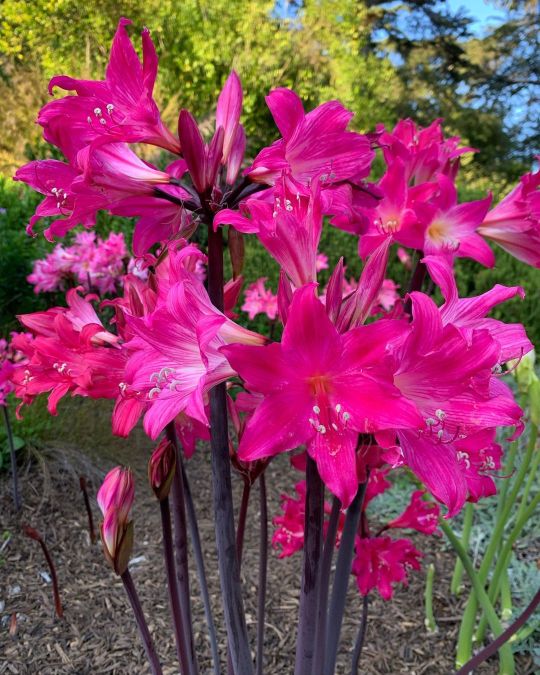
Late season flowers and foliage 🌺✨🌿 Sure sign fall is approaching, Amaryllis belladonna 🌷 Another Amaryllis family member, Haemanthus coccineus 🌼 Brugmansia blooming in the Andean Cloud Forest 🍁 Early fall color from Cercidiphyllum japonicum ‘Heronswood Globe’ 🌸 Japanese anemone (Anemone × hybrida) has been abuzz with pollinators 🌱 Sweet fragrant Luculia are starting to flower in Temperate Asia and Rhododendron Garden 🌳 Lush textural foliage in the Australia collection ✨ California fuchsia and Ericameria provide classic late summer color in the Native Plant Garden ❤️ Garden is open all long weekend—come on out and enjoy! 🍃 #sfbotanicalgarden #latesummer #meterologicalfall #labordayweekend #longweekend #flowerstagram (at San Francisco Botanical Garden) https://www.instagram.com/p/CTXg3GeAusS/?utm_medium=tumblr
1 note
·
View note
Photo

Rubber Rabbitbrush and Honeybee (Ericameria nauseosa and Apis mellifera, respectively)
8/26/17 - Spring Canyon Park
13 notes
·
View notes

